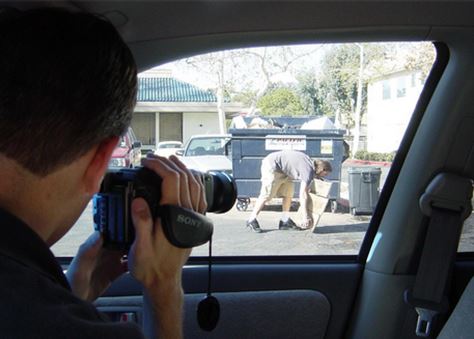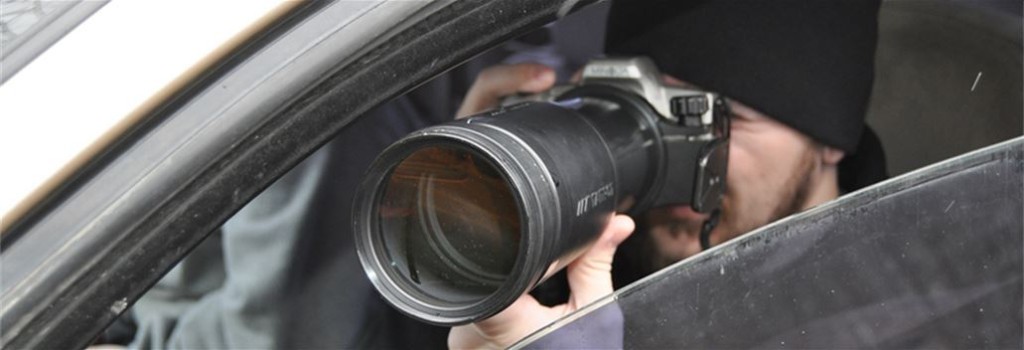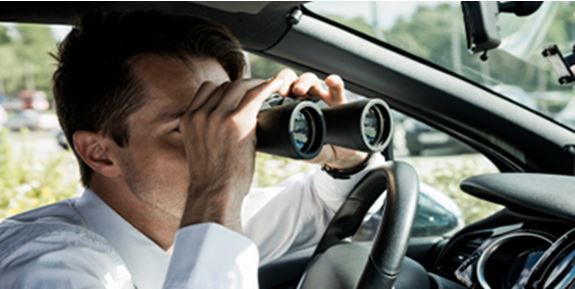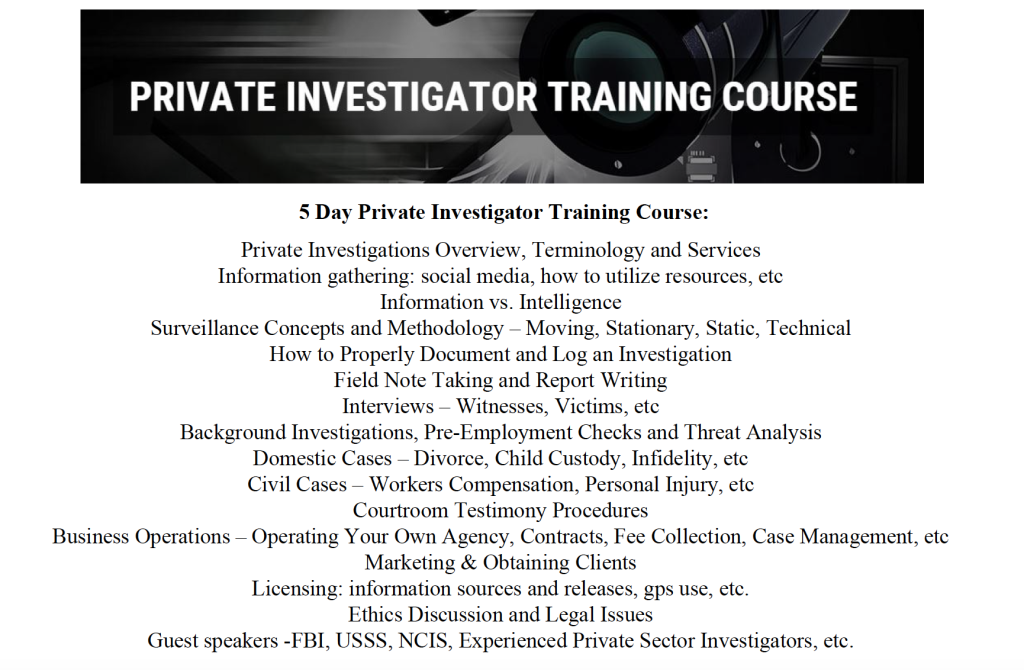Surveillance Tips for Investigations & Protective Intelligence

One of the oldest and most common practices in investigative services remains the best option in most cases when real-time information is required. Mostly used as a tools for private investigations but also a viable option in order to gather protective intelligence on a subject, surveillance is a very useful tool to keep greased in your toolbox. Surveillance is a skill learned best through experience, however tactics and techniques can also be improved via tips and tricks from seasoned practitioners. Below we have compiled some very effective tactics, techniques and procedures for conducting surveillance investigations, for both private investigators as well as for protective intelligence assignments.
On the Surveillance:
• How your presence is perceived in your target environment is very important to the success of your surveillance. ‘Fitting in’ and creating the illusion that you belong in order to effectively “hide in plain sight” is a very effective practice – sometimes being seen is better trying to remain hidden; hiding in plain sight to take advantage of the heuristics and geographics of that environment is difficult at times, but worth it.
• Be very careful not to give up your face directly to the subject, and only do so if absolutely necessary. At all costs, avoid eye contact as your eyes will tell the target more than you would ever care to. Remember, even if someone looks directly at you that does not mean that they see you. Avoid reacting as if they are on to you and just carry on.
• Avoid driving (or walking) by the target’s residence more than once per day unless absolutely necessary. You should prepare a story explaining why you are in that area and you can scatter ‘peepers’ such as a car seat/toys, laundry basket, etc. in plain view within the vehicle and do not leave anything revealing in view – camera, binoculars, notebook, etc.

• You do not need a ‘Chester the Molester’ or ‘Free Candy’ van to work covert surveillance cases without being seen and a van like that will stand out to every parent in the neighborhood. In most environments renting a common vehicle (Toyota Camry, Honda Civic, etc.) will be your best bet in blending in. Check the area ahead of time or even check Google Earth imagery to see the types of vehicles in the area and get what works. A business account with a big name renter usually means a standard car for $20-$30 a day, which is worth it.
• Check Google Earth imagery for routes in and out of the location and familiarize yourself with the area. This will facilitate your staging area as to avoid sitting right on the house, and will also let you know ahead of time if multiple vehicles will be required.
• It may help to get into the environment during the early morning hours as to avoid being seen entering the area and appear to have been there all night. Also consider insertion into the target area via someone dropping you off or parking the vehicle and walking away leaving you there to get a great spot. Remember, it is typically not the presence of the investigator that attracts attention – it is movement.
• Avoid being observed with a camera in-hand as the act itself will draw attention. No one uses a camera anymore…with the capabilities of most smart phones today, consider using it as this is less alerting. Some phones (namely iPhones) can activate the shutter with the volume button and you can do this with the device to your ear as to appear like you are talking on the phone – which works very well. Additionally, there are free apps that will time/date/GPS stamp the photo or video.
• Caution yourself when working cases near places where families an children gather – playgrounds, schools, etc. as you might find yourself surrounded by some very suspicious and emotional parents and consider the legality of who is in your photos and video as well.
• Start the day with a full tank of gas and clean the windshield and all glass on your vehicle so you can utilize your mirrors on your vehicle to shoot video and take photos to reduce movement and reduce frontal exposure. Make sure you note in your report if a photo was shot through a mirror.
• Conduct a pre-surveillance investigation and/or read all prior reports on the case, and know the places your target frequently visits. In being ‘creatures of habit,’ it may be your best bet to check your map and go to the closest location upon losing contact.
• Find a peculiar characteristic (sticker, damage, etc.) of the vehicle you are following or place an identifier, such as a sticker placed in the center of the tail light. If in a high traffic area at night, an IR chem-light affixed under the vehicle with an IR Viewer in hand works like a charm.
• If you can work as a male/female team you will be much less likely to be noticed; hold hand, flirt, etc. You can even get creative, taking pictures of the target making it look like you are taking pictures of each other.
• Be especially proactive on mobile surveillances; anticipate turns, stops and traffic interferences and consider your lane position carefully. The best way to learn this skill is through experience or by a ride along with a seasoned practitioner who verbalizes their thoughts as they work.
• When static, avoid things that will distract you from the target, such as Facebook, games, crosswords, etc. and if you must, bring the item to eye level in order to keep the target in your peripheral vision to maximize the observance of movement or change.

Equipment:
• The capability of taking clear digital video and still photos from 100 yards is critical – date and time stamped with GPS stamp is also important. Also consider a covert camera, such as a pen or button camera which can come in handy if in a small area, such as a small restaurant. Binoculars or a monocular are useful in reducing the use of your camera.
• A voice recorder and notepad are also essential to keep chronological notes. Smart phones usually have voice recorders and you can even speak your notes into it.
• At least one extra set of clothes with a hat so you can change your clothing and accessories (hats, sunglasses, etc.) throughout the assignment – especially if you have had close contact with the target; plan for all weather conditions as well.
• Food, water and a method of relieving yourself to avoid moving your vehicle or getting out of the vehicle is very important as the excessive movement is likely to raise interest.
• Check all electronic devices for proper date and time setting, fully charged batteries and an extra battery is always a good thing.
• A vehicle with fog lights is a great asset – this affords you the option of changing the head light pattern of the vehicle in chase throughout the surveillance which may reduce the chances of the subject identifying you over the course of the surveillance.

Report Writing:
• Write your report to satisfy the client AND the end user – i.e. the client’s attorney. Write in third person, “The investigator arrived…..” and remember, many people will never see you but will know you and judge you by how you write and how you have conducted the surveillance.
• Include a photo log that contains: Identification photos of the target, photos of all vehicles involved in the investigation, photos of every location the target visits along with the address of that location, photos of any special identifying marks on the target and vehicle(s) and of course include any useful photos pertinent to the intent of your investigation. Video can be referenced and/or included in the report by including still photos from the video, noting the time into the segment.
• Stay on topic in your report and satisfy the intent of the request. If it is not pertinent to the case, it does not belong in the report, such as if it’s a worker’s compensation injury case, know the injury and continually address in the report how the injury is consistent or inconsistent with the target’s current behavior and mobility and the fact the target/claimant is functioning inside or outside of those restrictions in your report.
———————————————————
Joseph M. LaSorsa, CPP® is currently employed as a senior partner managing and conducting: Protective Operations Training Courses, Executive Protection & Bodyguard Services, Risk Management Consultations & Seminars, Workplace Violence Prevention Seminars & Intervention Services, Security Consultations & Seminars, Private Investigations and Technical Surveillance Counter-Measures with LaSorsa & Associates – an International Protection, Investigations & Consulting Firm.
https://www.linkedin.com/in/josephmlasorsa

